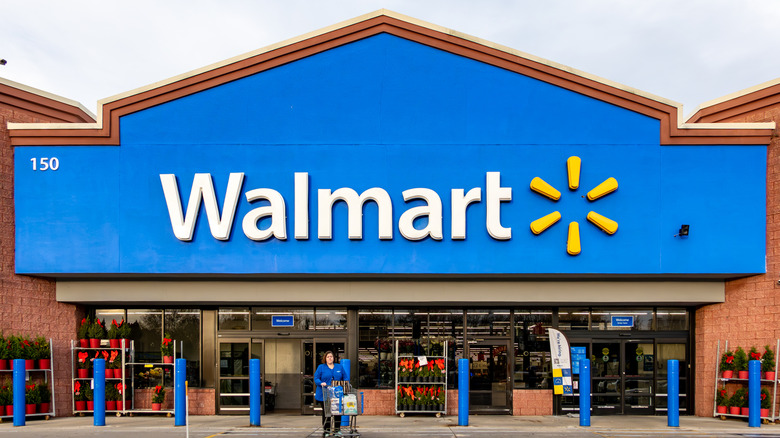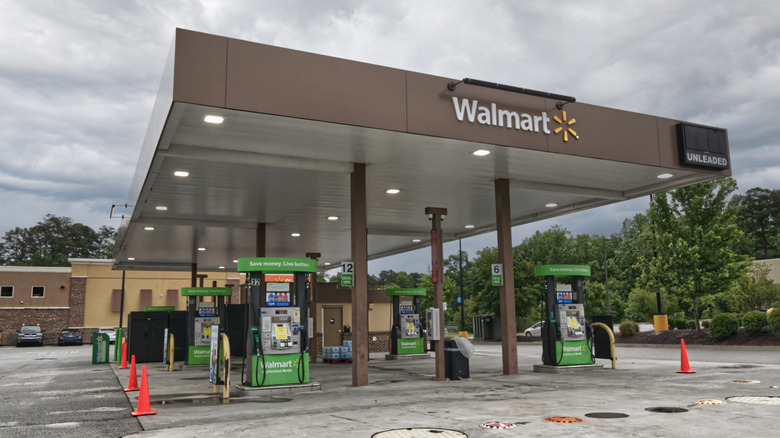Walmart Stores Are Closing In 2025 And The Reason Couldn't Be Clearer
According to a Businesswire report, U.S. retail store closures in 2025 are following a 2024 trend where 7,350 retail stores were shuttered. This was an explosion of closures not seen since 2020, when 10,000 stores were closed in relation to the COVID-19 pandemic. Although the reasons for store closures vary, each situation provides initial clues as to how bad their financial situations actually are when they begin mass closures of stores. In many cases, unreliable supply chains, and an inability to adapt technologies like Artificial Intelligence (AI) into more convenient online sales strategies, exacerbated issues related to customer service, disorganization, or unpredictable stock. Another major factor for store closures over the last year was inflation, which caused consumers to hold onto more of their money or look to spend on inflation-proof products.
While Walmart hasn't filed for bankruptcy, it has closed 11 stores. Although this number represents a small amount of outlets compared to a retail chain that shut down 100 stores nationwide, in an economic climate where over 2,500 stores in the U.S. are slated to close in 2025, any store closures are significant. With more than 4,000 stores in operation, this is a preemptive management decision that stems from strategy changes related to underperforming stores and concepts rather than significant trouble at the company.
Here's why Walmart stores are closing in 2025
To understand why Walmart is closing down stores, we have to go back to 2024. In April 2024, Walmart revealed it would close 51 health centers in five states, citing challenges around the cost of operation and an inability to make that arm of the business profitable. Walmart launched its foray into healthcare in 2019, and if nothing else, it shows a willingness on the part of the company to audit its business practices and make changes. With profitability being top of mind, the company made the decision to close stores in 2024, which isn't the first time Walmart has done so — Walmart shuttered 154 stores in 2016.
In an August 15, 2024 second quarter earnings call, CFO and Executive VP John David Rainey pointed to an economic and geopolitical backdrop of volatility as a reason for prudence. One way of demonstrating that prudence revolved around creating value for consumers through greater investments in eCommerce sales, which grew by 21%. Part of this was the recognition that convenience can mean different things to different people, and that doesn't necessarily mean an in-store experience. That does include the use of generative AI shopping assistants and the application of AI to streamline inventory and delivery processes. In addition to store closures, in-store deliveries and pick-ups and Neighborhood Market stores are also being culled, with the company determining what stores survive based on overall performance.
Here's how Walmart is doing so far
While Walmart is shutting down stores that underperform, it's perhaps a good sign that the company is adding more convenience stores and gas stations to its portfolio. The retailer is investing in 45 new and updated convenience and fuel stations across 34 states, bringing the number of stores to over 450 from a current count of just over 400 stores. With the incentive of a 10 cent per gallon discount on gas for Walmart+ members, Walmart hopes to compete with other big retail gas outlets like Costco, which earned 12% of its total sales from fuel stations in 2024, by growing the amount of stores with convenience and gas stations to 9.8% by the end of 2025. Considering that gas is one of the major items imported from Canada that could be affected by Trump's tariffs, and Walmart gas can be purchased by non-members and members, not having a Walmart+ membership could be a huge mistake costing you money.
Walmart released its fiscal fourth-quarter on February 20th, 2025. The report shows the retailer's U.S. sales rose by 4.6%, which doesn't even include gas sales. The company's investment in eCommerce also appears to be making a positive impact, with global online sales growing by 16%, most of that related to U.S. pick-up and delivery. With global revenue up by 4.1% — to $180 billion — to close the quarter, Walmart projects sales to grow 3% to 4% by the first fiscal quarter of 2026.
Here's the one state Walmart isn't closing stores
With all the talk of store closures, there's at least one state where the state is investing more rather than divesting. In March 2024, Walmart announced the construction of a new milk processing plant to open in 2026, in Robinson, Texas. The plant is expected to add 400 jobs to the local economy. Texas also hasn't made the list of Walmart's store closures, which is a good thing for people living in more rural parts of the state. Many retirees in rural Texan cities live on Social Security alone. Walmart is a provider of multiple affordable services — pharmacies, gas stations, convenience and grocery items — and it's easy to see how people with mobility issues, like seniors, could be seriously disadvantaged by the closure of a local Walmart.
In 2024, Texas was among the states with the best economies, so it makes sense that Walmart has no plans currently to close stores and wants to actually invest money in the state. As stated by Texas Governor Greg Abbot in Walmart's release, "World-renowned companies like Walmart continue to choose Texas because of our unmatched business climate, lower business operating costs, and highly skilled, diverse and growing workforce." Here and elsewhere, the company remains focused on growing its market through online sales, streamlining its business with technology, and actively investing in future growth in regions favorable to its business model.



